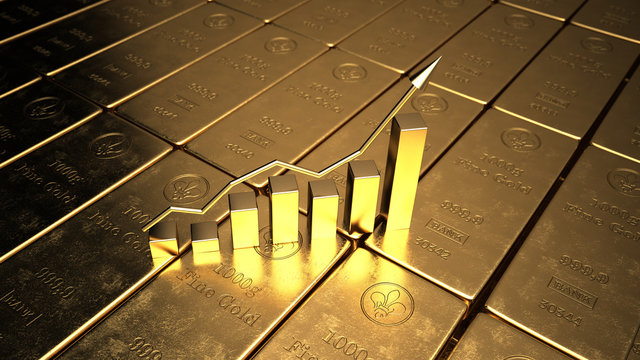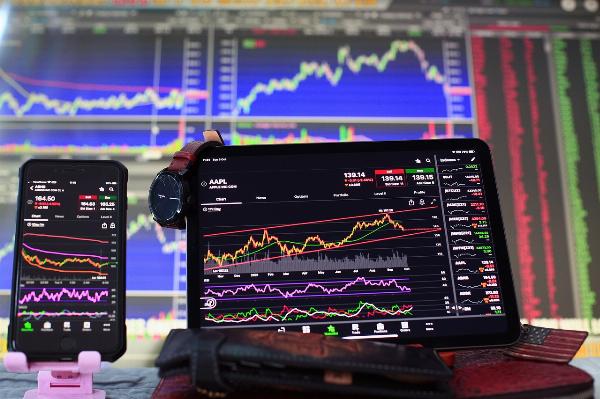Why Is the Gold Rate Increasing and What Does It Mean for Investors?

Strong 8k brings an ultra-HD IPTV experience to your living room and your pocket.
Gold has been a cornerstone of human civilization—a tangible asset revered for its intrinsic value, cultural significance, and role as a store of wealth. Over the past few decades, gold has emerged as one of the most sought-after instruments for investment portfolios worldwide. In recent times, however, the gold rate has been increasing at a noticeable pace. This upward trajectory is raising pertinent questions among investors regarding the factors driving this trend and its implications for future investment strategies. In this article, we will delve into the reasons why the gold rate is increasing and examine the potential opportunities and risks for investors.
Gold Rate Increase: Breaking Down the Reasons
The gold rate increase is a result of complex interactions between economic conditions, geopolitical uncertainties, and market forces. Here are the primary reasons influencing the surge in gold prices:
1. Inflationary Pressures
One of the key drivers of the gold rate increase is inflation. When inflation rises, the purchasing power of fiat currencies diminishes. This incentivizes investors to seek refuge in tangible assets such as gold, which acts as a hedge against eroding currency value. During periods of high inflation, governments may implement monetary policies such as reducing interest rates or increasing liquidity, which further boosts gold demand.
2. Economic Uncertainty
Gold has long served as a "safe haven" investment during periods of economic uncertainty. Events such as recession fears, banking instability, or slowing global growth push investors toward assets that offer stability and long-term security. Even the possibility of an economic slowdown often triggers an uptick in gold prices, as governments and investors alike see gold as a reliable asset to hold during turbulent times.
3. Geopolitical Tensions
Geopolitical issues often act as a catalyst for the gold rate increase. Events such as wars, trade disputes, or political instability create global economic anxiety. Gold becomes a preferred choice for investors during these times as it does not rely on any government or corporate backing. Recent geopolitical tensions in various parts of the world—ranging from trade disagreements between large economies to conflicts in regions like Eastern Europe—have driven more investors toward the yellow metal.
4. Central Bank Actions
Another prominent factor in the rise of gold prices lies in the actions of central banks worldwide. Many central banks have been increasing their gold reserves in response to fluctuations in currency values or in preparation for an economic downturn. This large-scale purchase boosts demand and contributes to the rise of gold rates. For instance, data shows that countries like India, China, and Russia have been steadily increasing their gold reserves as part of their monetary policy strategies.
5. Weakening of the U.S. Dollar
Historically, there has been an inverse relationship between gold prices and the U.S. dollar. When the dollar weakens, gold becomes cheaper for investors holding other currencies, thereby increasing demand and pushing prices higher. Recent fluctuations in the value of the U.S. dollar have resulted in heightened demand for gold globally, contributing significantly to the gold rate increase.
6. Rising Demand from Emerging Markets
Emerging markets such as India and China play a substantial role in global gold demand. In these countries, cultural traditions often involve gifting gold during festivals and celebrations. Additionally, growing disposable incomes in these regions have fueled demand for gold assets. With economies in nations like India continuing to stabilize and expand, domestic institutional demand, such as Sovereign Gold Bonds, has remained strong, further driving up gold rates.
Sovereign Gold Bond: Its Role Amid Rising Gold Rates
At a time when gold prices are surging, many investors are turning to paper-based gold investments such as the Sovereign Gold Bond Scheme (SGB). Launched by the Indian government, SGB provides investors an opportunity to invest in gold without physically owning it.
What Is a Sovereign Gold Bond?
SGB is a government-backed investment scheme designed to allow individuals to purchase gold in its digital form. These bonds are denominated in grams of gold and offer fixed interest on the amount invested while protecting against price fluctuations in the yellow metal.
Sovereign Gold Bond Next Issue Date
With the gold rate increasing, investors often keep a keen eye on the Sovereign Gold Bond next issue date so they can take advantage of price movements effectively. The timing of a new SGB tranche, announced periodically by the Reserve Bank of India (RBI), is critical for strategic investors aiming to capitalize on gold price volatility. Tracking the next issue date through official RBI notifications or financial news outlets is essential for anyone considering SGB investments.
Advantages of Investing in SGB amid Rising Gold Rates
Interest Income: Unlike physical gold, Sovereign Gold Bonds offer a fixed interest rate (usually around 2.5% per annum).
Tax Benefits: Long-term capital gains tax is exempt if investors hold SGB until maturity.
Zero Storage Concerns: SGB eliminates the need to store physical gold, reducing associated risks such as theft.
Liquidity: SGBs are tradeable on stock exchanges, allowing investors to monetize their bonds before maturity if needed.
For investors wary of buying physical gold during a price surge, SGB remains a lucrative option for diversifying their portfolio while benefiting from gold's price movements.
What Does the Gold Rate Increase Mean for Investors?
Opportunities for Investors
The rise in gold prices presents valuable opportunities for investors:
Portfolio Diversification: Gold serves as a hedge against market volatility. Rising prices highlight the importance of diversifying portfolios with gold to balance risks associated with equities and other assets.
Wealth Preservation: As gold continues to outperform during times of crisis, it offers investors a reliable means to preserve wealth.
Earning Potential: Instruments like Exchange-Traded Funds (ETFs) or Sovereign Gold Bonds allow investors to capitalize on gold's price movements without resorting to physical purchases.
Potential Risks for Investors
While the gold rate increase creates opportunities, it also comes with risks:
Timing the Purchase: Buying gold when prices are surging can lead to short-term market losses if prices temporarily dip. Investors should consider dollar-cost averaging to mitigate this risk.
Limited Returns: Unlike equities, gold's value typically increases at a steady pace rather than delivering explosive returns. Overinvestment in gold could result in missed opportunities in higher-yielding markets.
Currency Volatility: Since gold prices are influenced by currency changes, any strengthening of the U.S. dollar in the future could dampen returns on gold investments.
How Should Investors Approach Rising Gold Rates?
1. Long-Term Perspective
Investors should avoid panic buying amid surging gold rates and maintain a long-term approach. Historically, gold prices are cyclical, experiencing periods of rapid growth followed by corrections.
2. Explore Alternatives
While physical gold remains popular, alternatives like gold ETFs, Sovereign Gold Bonds, and gold mutual funds provide cost-effective ways to invest in gold. These instruments offer flexibility, liquidity, and tax benefits—making them ideal for modern investors.
3. Stay Informed
Stay updated on macroeconomic developments, central bank policies, and events that may influence gold prices. Knowing trends can enable informed decision-making. Tracking announcements like the Sovereign Gold Bond next issue date can also help investors plan their entries into the market.
4. Allocate Strategically
Gold should form a balanced proportion of your investment portfolio rather than dominating it. Experts generally recommend allocating 10-15% of your portfolio to gold for optimal returns.
Conclusion
The gold rate increase reflects the global economic landscape's uncertainties and shifting investor sentiment toward safe-haven assets. Whether it's due to inflation, geopolitical tensions, or central bank decisions, gold continues to play a critical role in wealth preservation and portfolio diversification. Instruments like Sovereign Gold Bonds provide an attractive option for those looking to invest strategically amid this upward trend.
For investors, the key lies in adopting a balanced approach, leveraging a mix of physical and paper gold investments while staying attuned to macroeconomic developments and issue dates for schemes like Sovereign Gold Bonds. While rising gold rates signal prosperity for current holders, they also underscore the importance of disciplined investing and long-term wealth-building strategies. By navigating this landscape prudently, investors can unlock gold's full potential while safeguarding their financial future.
Note: IndiBlogHub features both user-submitted and editorial content. We do not verify third-party contributions. Read our Disclaimer and Privacy Policyfor details.







